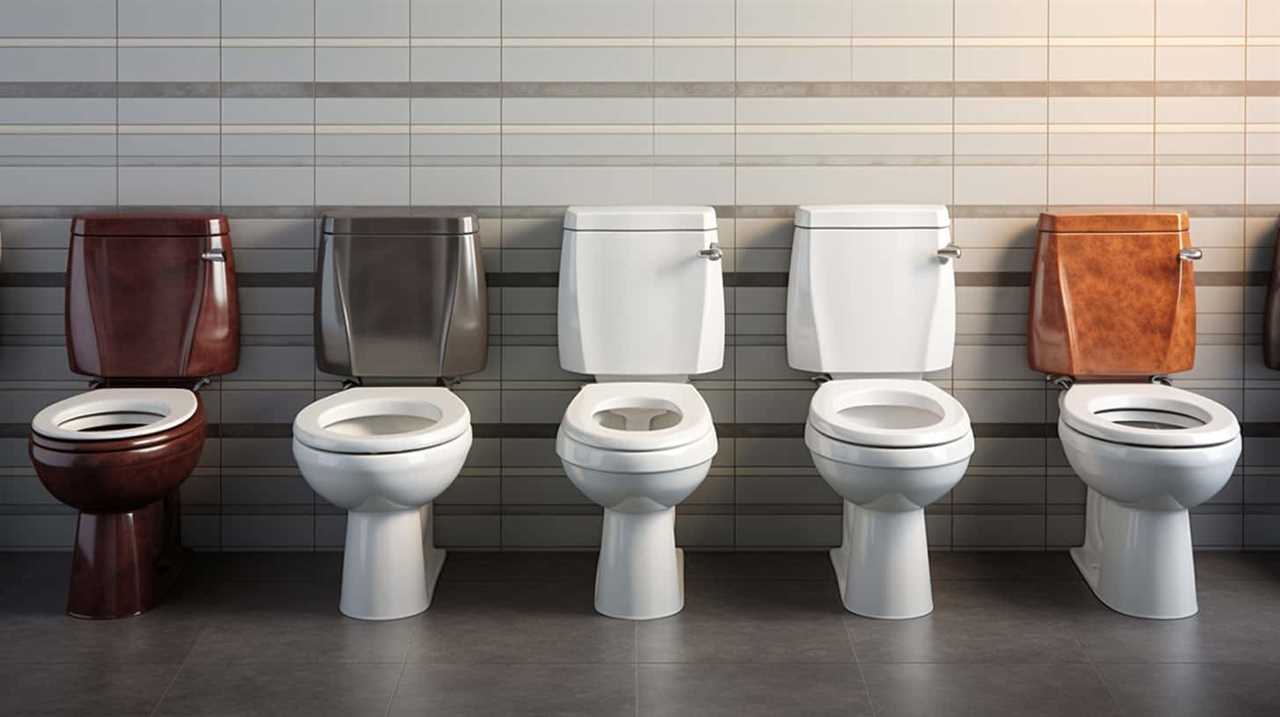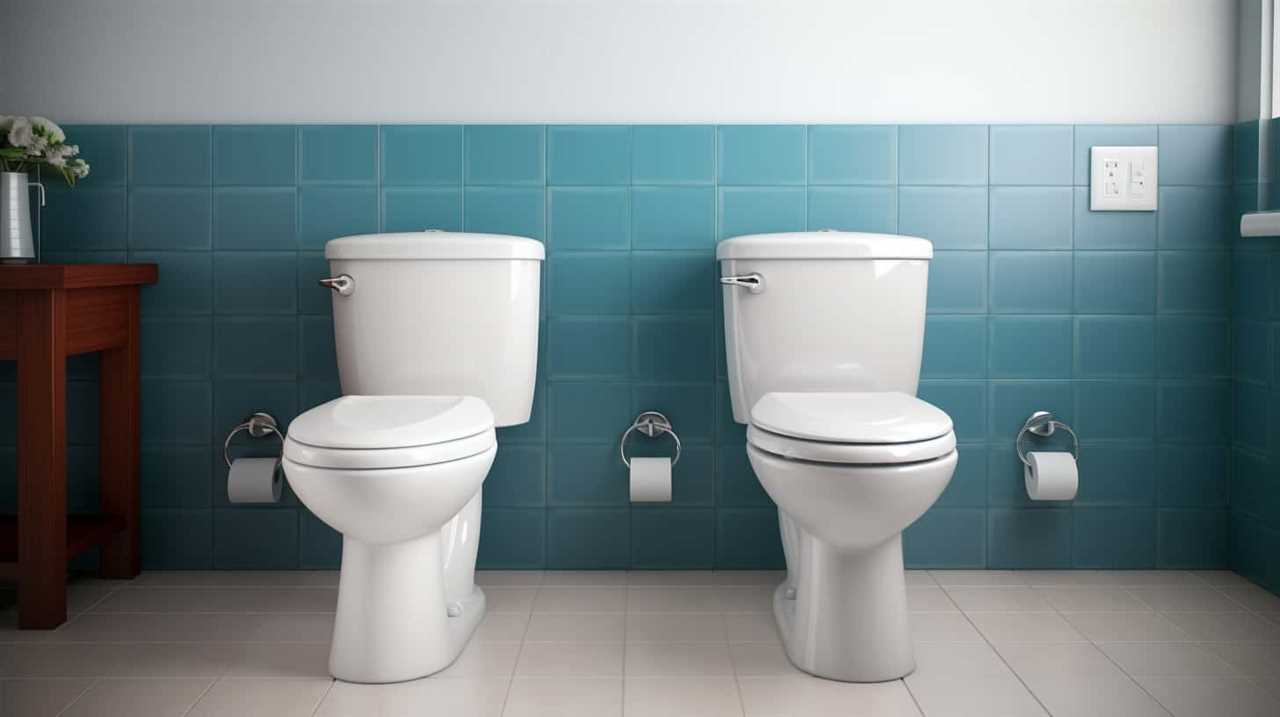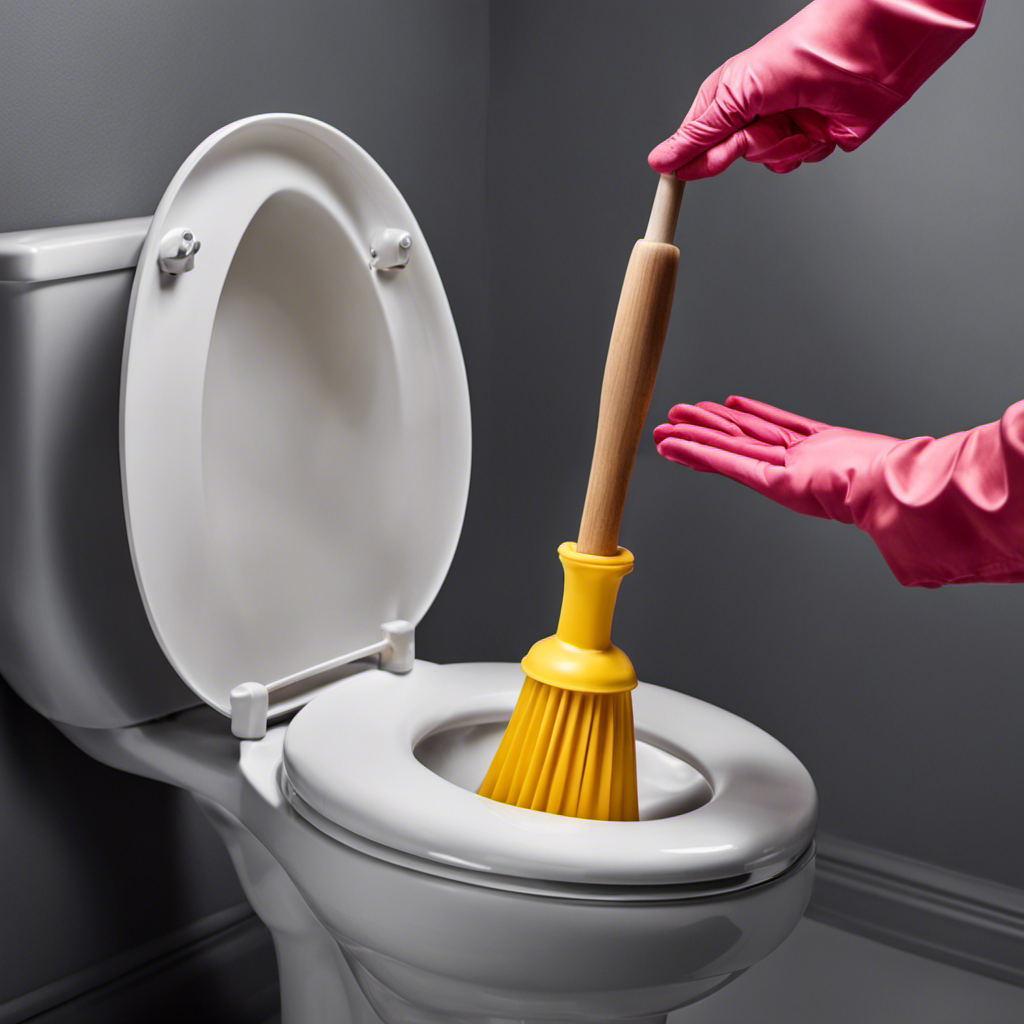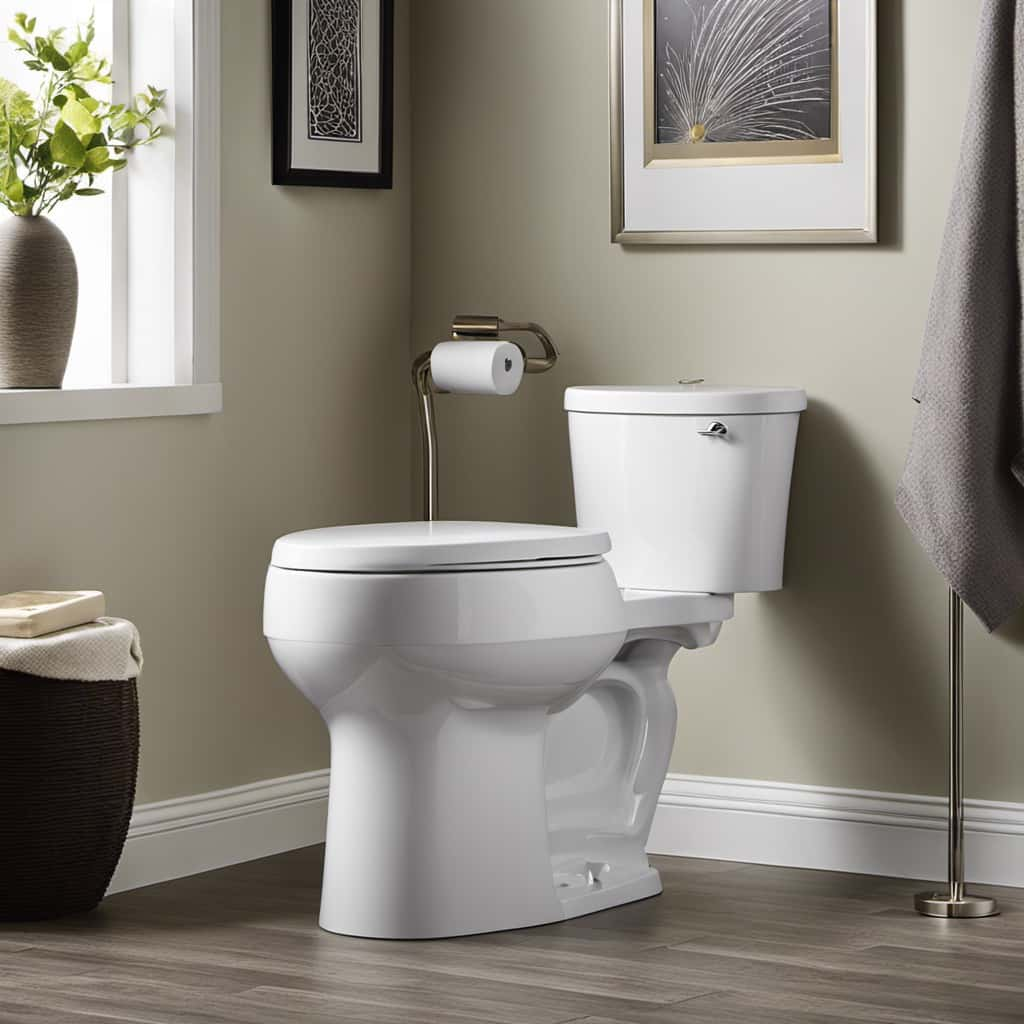When it comes to toilet tank replacement, there’s an old adage: ‘Out with the old, in with the new.’
In this article, I’ll guide you through the precise steps to upgrade your toilet tank.
We’ll gather the necessary tools and materials, shut off the water supply, remove the old tank, and install the new one.
With attention to detail and proper testing, you’ll have a leak-free and fully functional toilet in no time.

Let’s master the art of toilet tank replacement together.
Key Takeaways
- Measure the dimensions of the current toilet tank and search for replacement parts that match the specifications.
- Shut off the water supply and drain the toilet tank before removing the old tank.
- Take safety precautions and dispose of the old toilet tank responsibly according to local regulations.
- Install the new toilet tank securely, adjust the fill valve, and check for leaks to ensure proper functionality.
Gathering the Necessary Tools and Materials
To begin replacing a toilet tank, I’ll gather the necessary tools and materials.
The first step is to measure the dimensions of the current toilet tank. This includes the width and length of the tank, as well as the height from the base to the top of the tank. These measurements are crucial in finding a replacement tank that will fit properly.
Next, I’ll search for replacement parts. This can be done by visiting a local hardware store or searching online. It’s important to find a tank that matches the specifications of the old one to ensure a proper fit.

Additionally, I’ll need to gather tools such as a wrench, pliers, and a screwdriver to remove the old tank and install the new one.
Shutting off the Water Supply and Draining the Toilet Tank
I will shut off the water supply and drain the toilet tank.
Before beginning this process, it’s important to prepare the workspace by gathering the necessary tools and materials.
Now, let’s move on to shutting off the water supply and draining the toilet tank.

To do this, follow these steps:
- Locate the shut-off valve, usually located near the base of the toilet.
- Turn the valve clockwise to shut off the water supply.
- Once the water supply is shut off, flush the toilet to drain as much water as possible from the tank.
- To remove any remaining water, use a sponge or towel to soak up the water from the tank.
Understanding the water supply system is crucial for this step, as shutting off the wrong valve can lead to complications.
Removing the Old Toilet Tank
To begin removing the old toilet tank, I’ll disconnect the water supply line. This step is crucial for ensuring a safe and efficient removal process.
First, I’ll turn off the water supply valve located near the base of the toilet tank. Then, using an adjustable wrench, I’ll loosen the nut connecting the water supply line to the bottom of the tank. It’s important to place a bucket or a towel beneath the connection to catch any remaining water that may spill out.
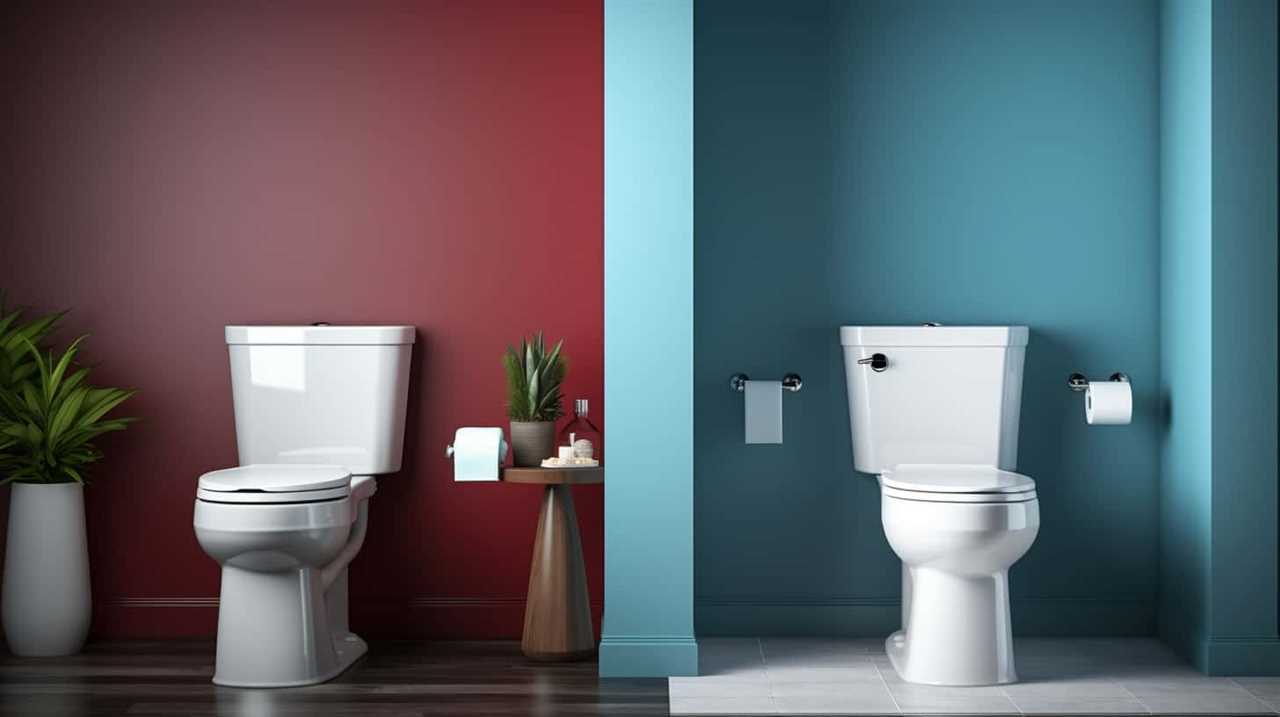
Once the water supply line is disconnected, I can proceed with removing the old toilet tank. Safety precautions must be taken during this process, such as wearing gloves and protective eyewear.
Additionally, it’s important to dispose of the old toilet tank responsibly, following local waste disposal regulations.
Installing the New Toilet Tank
After disconnecting the water supply line and removing the old toilet tank, it’s time to install the new toilet tank. To ensure proper installation and functionality, there are a few key considerations to keep in mind:
- Tank stability: Ensure that the tank is securely attached to the bowl using the provided bolts or screws. This will prevent any wobbling or potential leaks.
- Proper water level: Adjust the fill valve to achieve the recommended water level in the tank. This will ensure efficient flushing and prevent any overflow issues.
- Tighten all connections: Use adjustable wrenches to tighten all the connections, including the water supply line and the bolts securing the tank to the bowl. This will prevent any leaks or water wastage.
- Test for leaks: Once the new toilet tank is installed, turn on the water supply and check for any leaks around the connections. Make any necessary adjustments to ensure a watertight seal.
Testing for Leaks and Ensuring Proper Functionality
Once the new toilet tank is securely attached and all connections are tightened, it is important to test for leaks and ensure that the toilet is functioning properly. Regular toilet tank maintenance is crucial for avoiding costly repairs and prolonging the lifespan of your toilet. To help you troubleshoot common toilet tank issues, refer to the table below:

| Issue | Possible Cause | Solution |
|---|---|---|
| Leaking tank | Loose or damaged gasket | Tighten or replace gasket |
| Weak flush | Clogged toilet bowl or blocked vent pipe | Clear blockage or unclog pipe |
| Continuous running | Faulty flapper or fill valve | Replace flapper or fill valve |
Frequently Asked Questions
How Do I Choose the Right Size and Style of Toilet Tank for My Bathroom?
When choosing a toilet tank, consider the material and color options available. Assess the space in your bathroom to determine the appropriate size and style. This ensures a seamless and functional addition to your bathroom.
Can I Replace Just the Inner Components of the Toilet Tank Without Replacing the Entire Tank?
Yes, you can replace just the inner components of the toilet tank without replacing the entire tank. This is a common method for toilet tank repair and troubleshooting. It allows for targeted fixes and saves money.
Should I Hire a Professional Plumber for Toilet Tank Replacement, or Is It Something I Can Do Myself?
Toilet tank installation can be done as a DIY project, but it’s important to carefully follow the instructions and have the necessary tools. If unsure or inexperienced, hiring a professional plumber is recommended for a successful replacement.
Are There Any Additional Steps or Precautions I Need to Take if My Bathroom Has Tile Flooring?
When working with tile flooring, it’s important to consider the potential challenges it may pose during toilet tank replacement. Properly protecting the tiles and ensuring a secure installation are key to avoiding any damage.

What Should I Do if I Encounter Any Unexpected Difficulties or Complications During the Toilet Tank Replacement Process?
If I encounter any unexpected difficulties or complications during the toilet tank replacement process, I will handle them by troubleshooting the issue. I will assess the problem, consult resources, and apply appropriate solutions to ensure successful completion.
Conclusion
In conclusion, replacing a toilet tank can be an intricate task, but with the right tools and materials, it can be accomplished smoothly.
By following the step-by-step directions, shutting off the water supply, and carefully installing the new tank, one can ensure proper functionality and avoid any potential leaks.
It’s important to take the necessary precautions and test for any issues before considering the task complete.
